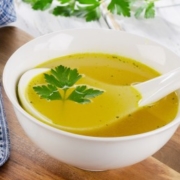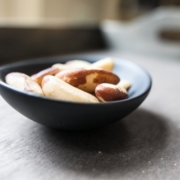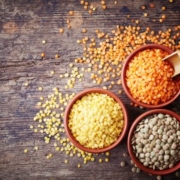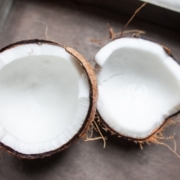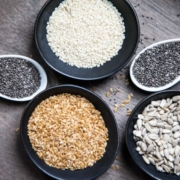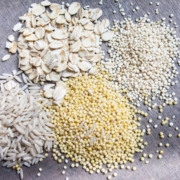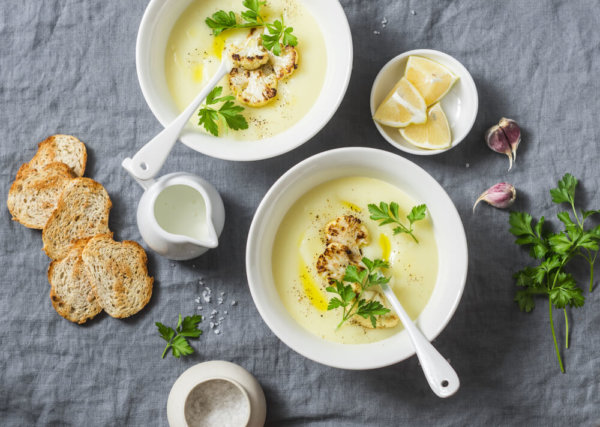
What do you think about cauliflower? For some, it’s a staple from grandma’s house –
but for many others, it’s simply overlooked and ignored! I’m hear to tell you, it’s all
about how you prepare it – and if you can find a few ways you love to make it, you
can enjoy all the health benefits it has to offer.
For me, cauliflower was one of my least favorite vegetables growing up. I never
really gravitated towards it, as I felt it tasted bland and unappealing. However, as I
have grown and my palate has developed, I have learned to appreciate all vegetables
for their unique flavors and textures.
Cauliflower is part of the cruciferous vegetable family, which also includes broccoli,
cabbage, kale, bok choy, collards, radish, and watercress. It is most commonly white,
but is also seen in green, purple, and sometimes orange.
Through the years, I have learned how to hide different vegetables in the meals I
prepare for my kids – can you relate? It seems impossible to get in those 5-7 servings
of vegetables a day when I had so many picky eaters.
I learned how to create recipes (given my children’s dietary restrictions), while also
preparing the meals they loved – such as pizza, muffins, bread, etc. This is where
cauliflower became very useful! It can be used to make mashed “potatoes,” rice,
bread, muffins, pizza crust, “risotto,” or even dessert!
It has become a staple – not only for my children, but also for my clients who follow
a low carb, paleo lifestyle.
Some of the ways I like to incorporate cauliflower include:
1. Raw with hummus or salsa
2. Lightly steamed with Himalayan salt
3. Mashed as a side dish with ghee
4. Roasted with coconut oil
5. Pureed into soups
6. Pizza crust
7. Rice to be used in nori rolls or grain free salad
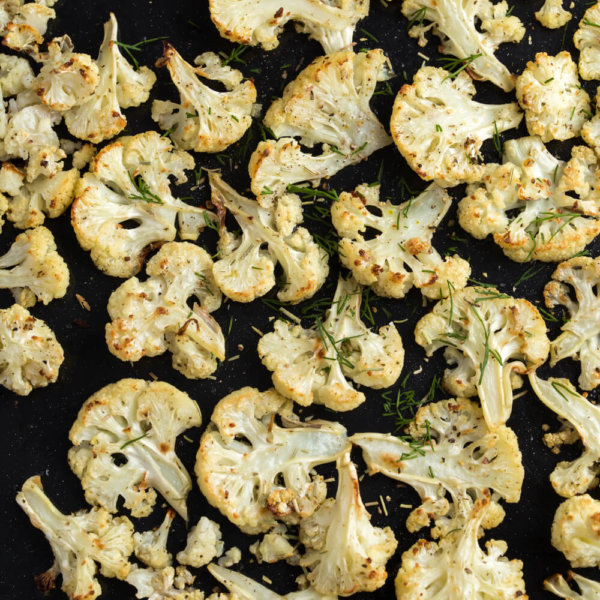
Cauliflower is also quite nutritious:
• Vitamin C
• Vitamin K
• B vitamins – folate, biotin, B6, B2, B1, B3
• Low glycemic load
• Low in carbohydrates
• Potassium
• Magnesium
• Manganese (antioxidant important in oxygen-related metabolism)
• Iron
•Fiber
• Protein (easily assimilated into the body)
• Omega-3
• Sulforaphane (anti-cancer compound)
That list of nutrients is just the beginning. There’s more!
Glucosinolates: Sulfur-containing compounds that provide a variety of benefits,
including cardiovascular health, digestive health, immune support, anti-
inflammatory properties, and detoxifying the system.
Cauliflower includes:
Glucoiberin
Glucoerucin
Glucoraphanin
Neoglucobrassicin
Progoitrin
Sinigrin
4-hydroxyglucobrassicin
4-methoxyglucobrassicin
Antioxidants: Cauliflower is the 10th best source of vitamin C in the
vegetable family. It includes:
Beta-carotene
Cinnamic acid
Ferulic acid
Beta-cryptoxanthin,
Caffeic acid
Quercetin
Rutin
DIM: Di-indolyl-methane has been shown to be effective in the
treatment of HPV (Human Papilloma Virus) and cervical dysplasia.
With all that information, who wouldn’t want to support a healthy
immune system by incorporating cauliflower?
To help you get going, here are a few tips about shopping for
cauliflower:
1. Look for clean, creamy white, compact curds where the buds are
not separated
2. Ensure there are no moldy or brown spots
3. Heads with thick greens are better protected, and will be fresher
4. Store uncooked in a paper bag in the fridge for up to one week
5. To prevent moisture from developing, store with the stem side
down
What are your thoughts on cauliflower? Do you incorporate it into your daily meals? If
so, how do you like to eat it? I always love to hear new ways of preparing my favorite
veggies.
Can you challenge yourself to try and incorporate this powerhouse veggie into your
meals this week?
With so many different ways to use it, so many recipes available, it shouldn’t be too
difficult to find a few that you and your family love. Feel free to experiment and
discover your own cauliflower secrets. Finding ways to incorporate this powerful
veggie into your meals is a great way to boost health and power your body with the
nutrients it needs to thrive!
Sending love and light,
Melissa

